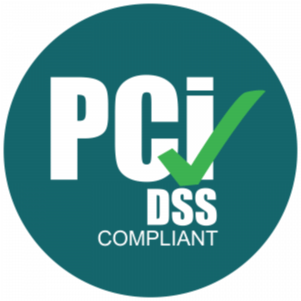Let us go over Kubernetes secrets management, some best practices, and related topics like the vault.
Kubernetes is an excellent platform for containerized application management. It reduces friction during the deployment process and provides an open-source option for businesses to scale their app capabilities.
One weak point for Kubernetes, however, is the current security practices that lag behind for many companies. With cybersecurity becoming an even more pressing topic today for any industry, having the right user access control in place is the best step towards not getting left in the dust by the competition.
What Are Kubernetes Secrets?
Companies have hundreds upon thousands of internal accounts belonging to human employees as well as machines and servers. All of them occasionally must access sensitive company data and services to do their jobs. How do you make sure access is only given to the right parties?
Secrets are a way to store sensitive credentials for user access control. They authorize business accounts to use confidential data. Secrets can take many forms:
- Passwords
- SSH keys
- Private encryption keys
- Tokens
- Private certificates, such as transport layer security (TLS) and secure sockets layer (SSL)
- One-time passwords for individual devices
Managing secrets in Kubernetes can be built-in or customized. Kubernetes automatically creates built-in secrets for service accounts by attaching them to containers. Administrators have the option to create their own custom secrets as well.
It’s an important skill for any manager to know how to manage secrets in a Kubernetes vault. Let’s go deeper into Kubernetes secrets management vs. a vault service.
[sc name=”glossary-cta-sm”][/sc]Weaknesses of the Built-In Secrets Management in Kubernetes
Kubernetes is an effective platform for working with secrets and user credentials. Updating secrets is simple, as all containers using a secret automatically get the updated copy when a change is made.
However, Kubernetes secrets should not be your business’s entire security plan. There is a limited built-in secrets control, but administrators must have additional defenses, especially when working with platforms outside of Kubernetes. Some weaknesses of the built-in module include:
- No zero-trust system. You should aim to decrypt secrets only on demand, but Kubernetes does not support this functionality natively. Because there is no “need to know” basis here, anybody with root access to a Kubernetes node can see any secrets within it.
- Insecure storage methods. Secrets are stored within a data file known as “etcd.” Etcd itself is not encrypted, so administrators must limit its access privileges and ensure encryption at rest. Kubernetes also store credentials as unsecured base-64 encoded strings.
- External risks. Just as important as Kubernetes secrets management is how other applications use your secrets. Ensure the tools and platforms you use don’t expose your sensitive data by storing it without proper security measures or sending it out to third-parties.
- Not tracking changes. It’s always important to track all the changes made to your secrets, though Kubernetes does not have this feature built-in. Keeping everything up-to-date and logged helps reduce the chance of missing credentials.
These aren’t the only challenges to vault security either. A few other challenges to secret security include:
- Potential problems with shared environments. If you’re creating secrets for a set of pods in a cluster, keep in mind that any secrets you have might be available to any users in that cluster.
- Working with environmental variables. Be wary when loading secrets into environmental variables, as the resulting log entries may include the secrets as plain text.
- Secret leaks. Watch your source control, as fragments of your secrets may end up there. Also, keep an eye on all the tools and software suites you use; each one has its own security policies that might not be compatible with your organization’s overall policies.
Despite these challenges, working with the Kubernetes vault is a beneficial experience for any enterprise. The administration only needs to understand how to approach security.
How Should I Approach Kubernetes Security?
Some of the best practices to consider for Kubernetes secrets management are:
- Regular auditing. Audits give you visibility into the security landscape of your business. They also limit incidents of unauthorized access and help you enforce legal compliance.
- Role-based access control (RBAC). When combined with multi-factor authentication, RBAC gives you a way to enforce time-based and task-based access to user accounts. It overall reduces the chance of accidentally giving access to the wrong user.
- Official documentation. Consult the official Kubernetes documentation on secrets and the vault if you need more details about how they work.
- Centralized solutions. There exist centralized secrets management solutions on the market outside of Kubernetes.
Building on this last point, consider these third-party services for DevOps secrets management. They might not always be suitable, especially for smaller deployments, but many companies use them for tasks like auditing, access control, and vault secrets management utilities.
Examine your options carefully to find the best solution for your security needs and budget. For instance, how can you compare the features of native Kubernetes secrets management vs. an Akeyless vault?












